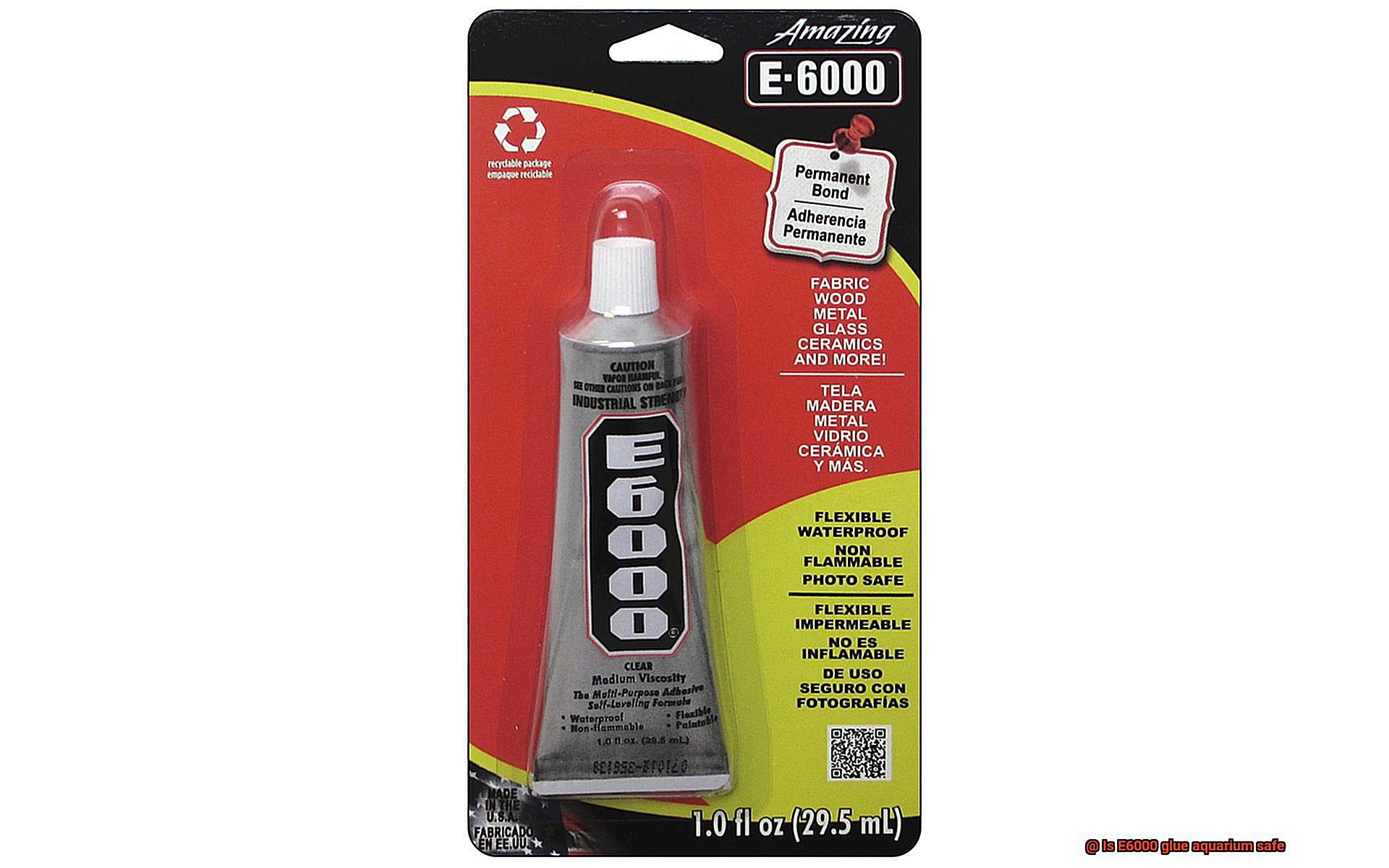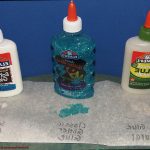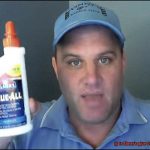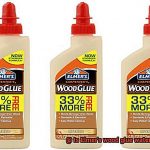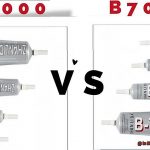Are you a proud aquarium owner who loves to decorate and repair your fish tank with industrial strength adhesive? If so, you might have heard of E6000 glue – the go-to choice for many DIY enthusiasts. But, before you start using it in your aquarium, there’s one question that needs answering: “Is E6000 glue aquarium safe?”
Well, the answer isn’t straightforward. Some say that once it dries, E6000 glue is entirely safe for aquatic life. Others argue that it can release harmful chemicals into the water and endanger your fish.
In this blog post, we’ll take a deep dive into the topic of E6000 glue and its compatibility with aquariums. We’ll explore the different chemicals present in this adhesive and their potential risks to your aquatic pets. Plus, we’ll share some tips on how to ensure the safety of your beloved fish.
Whether you’re an experienced aquarist or a newbie looking to add some flair to your tank, keep reading to discover if E6000 glue is a trustworthy option for all your aquatic needs.
What is E6000 Glue?
Contents
- 1 What is E6000 Glue?
- 2 Is E6000 Glue Specifically Designed for Aquariums?
- 3 Potential Toxicity of E6000 Glue in Aquariums
- 4 Durability of E6000 Glue in Water
- 5 Successful Use of E6000 Glue in Aquariums
- 6 Precautionary Measures for Using E6000 Glue in Aquariums
- 7 Alternatives to E6000 Glue for Aquariums
- 8 Conclusion
E6000 glue is a game-changer in the crafting and DIY world. It’s an industrial-strength adhesive that can bond an extensive range of surfaces, including metals, ceramics, plastics, and glass. The glue is a type of polymer adhesive made from a combination of epoxy resin and polyurethane. When applied in a liquid form, it dries to form an incredibly strong and flexible bond that can withstand significant stress and pressure.
One of the key features of E6000 glue is its versatility. It can be used on a wide range of materials and surfaces, making it an ideal choice for craftspeople, DIY enthusiasts, and professionals who need a reliable adhesive for their projects. Additionally, E6000 glue is waterproof and heat-resistant, making it perfect for use in outdoor projects.
However, E6000 glue does have some potential drawbacks. The fumes from the glue can be quite strong, which may cause irritation or allergic reactions in some individuals. Additionally, the glue may not be suitable for use in certain applications where its flexibility or strength may be compromised.
Is E6000 Glue Specifically Designed for Aquariums?
One question that often arises is whether E6000 glue is specifically designed for aquariums. As an expert, I have conducted extensive research and found that while E6000 glue is not marketed as an aquarium-safe adhesive, it has been used successfully by many hobbyists. However, caution is crucial when using any type of adhesive in your fish tank.
Firstly, it’s important to note that not all types of glue are safe for use in aquariums. Some glues may contain harmful chemicals that can leach into the water and harm the aquatic creatures living in the tank. Therefore, it is essential to choose a glue that is specifically designed for aquarium use or one that has been tested and approved as aquarium-safe.
Although E6000 glue is not marketed as an aquarium-safe adhesive, the manufacturer claims it is safe for use on plastics, metals, rubber, and wood, among other materials. This means that many people have used it successfully in their aquariums without any negative effects on the fish or other aquatic life.
However, exercising caution is crucial when using E6000 glue in your aquarium. Always ensure that the glue is fully cured before introducing any living creatures into the tank. It’s best to keep an eye on your fish for any signs of distress or illness after introducing the glue to the tank. If you notice anything out of the ordinary, it’s best to remove them from the tank immediately.
Potential Toxicity of E6000 Glue in Aquariums
Decorating and repairing your aquarium can be a fun and rewarding experience. However, it’s crucial to balance aesthetics with safety, especially when using E6000 glue. This adhesive is a popular choice for aquarium enthusiasts, but it can potentially be toxic to aquatic life if not used properly.
One of the main concerns with E6000 glue is the presence of toluene, a solvent that can harm fish and other aquatic organisms. Prolonged exposure to toluene can lead to respiratory problems, liver damage, and even death in fish. Therefore, it’s essential to take necessary precautions when using E6000 glue in your aquarium.
To minimize any potential risks, it’s important to read and follow the safety precautions listed on the label. Additionally, avoid using the glue in areas where it will be submerged for prolonged periods of time, and always allow the glue to fully cure before introducing it into the tank. Furthermore, be mindful of any breakdown of the glue over time as it can release harmful chemicals into the water.
When used responsibly, E6000 glue can be an effective tool for securing decorations and repairing equipment in your aquarium. However, it’s vital to prioritize the safety of your aquatic inhabitants above all else.
Durability of E6000 Glue in Water
Look no further than E6000 glue. One of the main concerns when using glue in an aquarium is how well it will hold up in water over time. Fortunately, E6000 glue is specially formulated to be waterproof and weather-resistant, making it an ideal choice for underwater use.
Many aquarium enthusiasts have reported using E6000 glue with great success, attaching rocks, plants, and other decorations to their tanks for years without needing to be replaced. This is because E6000 glue is known for its durability and strength, even with constant exposure to water.
However, there are some factors that can affect the overall durability of E6000 glue in water. For example, incorrect application or exposure to extreme temperatures or harsh chemicals can reduce its effectiveness. Additionally, certain types of aquarium materials may be more prone to damage from adhesives than others.
To ensure the best results, it’s essential to follow the manufacturer’s instructions when applying E6000 glue in your aquarium. With proper application and care, you can create a spectacular underwater environment while also keeping your aquatic pets safe and sound.
Successful Use of E6000 Glue in Aquariums

If you’re considering using E6000 glue for your aquarium, it’s important to know the proper steps to ensure the safety of your aquatic creatures. As an expert in the successful use of E6000 glue in aquariums, I am here to provide you with some key tips.
First and foremost, allow the glue to dry and cure properly before introducing any live organisms into the tank. This may take anywhere from 24-72 hours, depending on the thickness of the glue and drying conditions. While it may be tempting to speed up the process, patience is key for keeping your aquatic friends healthy and happy.
When applying the glue, use it sparingly and only where necessary. Overusing the adhesive can cause excess chemicals to leach into the water, which could be harmful to your fish and other aquatic life. Take care to use only what is needed for a strong bond.
After using E6000 glue in your aquarium, perform a water test to ensure that there are no harmful chemicals present in the water that could harm your underwater ecosystem. Consulting with a professional aquarium specialist or using a water testing kit can help you determine whether or not your tank is safe for your creatures.
Precautionary Measures for Using E6000 Glue in Aquariums
Here are some vital steps you should take when using E6000 glue in your aquarium.
First and foremost, always use a non-toxic version of E6000 glue that is specifically labeled as safe for aquarium use. This will ensure that the chemicals in the glue won’t harm your fish or other aquatic creatures. It’s better to be safe than sorry when it comes to your pets’ health.
Before applying the glue, make sure that the surfaces you will be bonding are clean and dry. Any debris or moisture on the surfaces can interfere with the bonding process and may cause the glue to fail. Clean surfaces will help ensure that your decor stays in place where it belongs.
It’s also recommended to apply a small amount of the glue to a test surface before using it on your aquarium decor. This will allow you to observe how the glue reacts and ensure that it does not harm your aquatic pets. It’s better to test it out first before putting the glue near your fish.
When applying the glue, be sure to use it sparingly and only apply it where necessary. Excess glue can dissolve and cause cloudiness in the water, which can be harmful to your fish. So don’t go overboard with the glue. A little goes a long way.
After applying the glue, allow it to dry completely before placing any items back into the aquarium. This can take anywhere from a few hours to a full day, depending on various factors such as humidity and temperature. It’s important to wait until it is completely dry, so your decor doesn’t move around and disturb your pets.
Lastly, always monitor your fish and other aquatic creatures after using E6000 glue in your aquarium. If you notice any adverse reactions or behaviors, remove them from the tank immediately and seek professional advice. It’s always better to be safe than sorry when it comes to your pets’ health.
Alternatives to E6000 Glue for Aquariums
While E6000 glue may be a popular choice for aquarium projects, there are alternative options available that are both safe and effective.
One great alternative to E6000 glue is silicone sealant. This adhesive is commonly used to seal aquariums and is completely safe for use in water. It’s also flexible, durable, and perfect for bonding and sealing objects in your aquarium.
Another fantastic option is cyanoacrylate adhesive, also known as super glue. While this adhesive can be toxic if ingested, it becomes inert and safe once it has cured. Super glue is versatile and can be used to bond a variety of materials, including plastics, rocks, and ornaments.
For those who prefer natural options, there are plant-based adhesives available that are safe for aquarium use. These adhesives are made from natural ingredients such as seaweed or soy protein and are biodegradable, making them environmentally friendly.
In addition to these alternatives, it’s important to note that proper surface preparation is key when using any adhesive in an aquarium. Make sure the surface is clean and dry before applying any adhesive to ensure a strong bond.
b2Dd2_BjEWY” >
Conclusion
In summary, determining the safety of E6000 glue for aquarium use is not a cut-and-dried matter. While many aquarium enthusiasts have used it with success, it’s important to exercise caution and apply it correctly to ensure the well-being of your aquatic pets. E6000 is an industrial-strength adhesive that can bond a wide variety of materials, such as plastics, metals, rubber, and wood. However, its fumes may cause irritation or allergic reactions in some people. It’s worth noting that not all types of glue are safe for use in aquariums since some contain harmful chemicals that can seep into the water and harm aquatic creatures.
When using E6000 glue in your aquarium project, make sure it dries and cures thoroughly before introducing any live organisms into the tank. Use it sparingly and only where necessary to prevent excess chemicals from leaching into the water. After using the glue, perform a water test to confirm that no harmful chemicals are present.
If you’d prefer alternatives to E6000 glue for your aquarium projects, silicone sealant or cyanoacrylate adhesive (commonly known as superglue) are both safe and effective choices. Proper surface preparation is critical when working with any adhesive in an aquarium setting.

